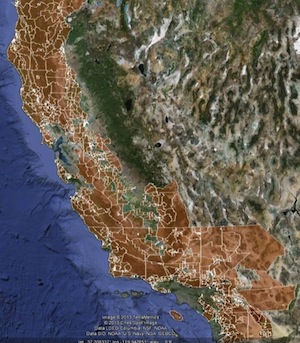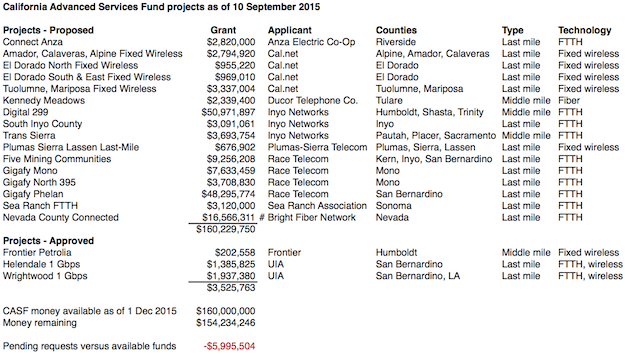
There’s a difference between ambition and greed.
Nearly three years after it was first submitted, ViaSat’s proposal to deliver broadband service to a stunningly large swath of western and southern California is officially dead. The company had asked the California Public Utilities Commission for $11.1 million to buy satellite dishes and receivers for people living in underserved areas from the Oregon border, south along the coast and the western side of the central valley, to the Mexican border, and east to Arizona.
There is some logic to using expensive and limited satellite bandwidth to reach people in truly remote areas, where even fixed wireless Internet service is uneconomical. But ViaSat wanted it all: had the project been approved as proposed, then it would have been the only company that could have received subsidies from the California Advanced Services Fund to upgrade broadband infrastructure and service in that vast area for several years.
It was that exclusivity over what’s been described as “virtually all of rural California” that eventually killed ViaSat’s plans. Objections came thick and fast, particularly from regional broadband consortia under its proposed footprint. ViaSat was willing to cut the exclusivity period by a year but not give it up completely. It also refused to better focus its proposal on particular communities, rather than just grab everything it could see from orbit.
It’s a good decision on the part of the CPUC. If a company wants a subsidy, it should put in the work needed to justify the exclusivity that goes along with it and focus on the people it will actually serve.
With ViaSat out of the running, and counting the recent proposal from Ducor Telephone for Kennedy Meadows, the CASF kitty is still about $6 million oversubscribed, assuming all pending applications are funded as requested. As a practical matter, it’s unlikely all would be, but even so, the fund is at capacity now. In order for a new proposal to be funded, a pending one will have to be bumped off the table.

